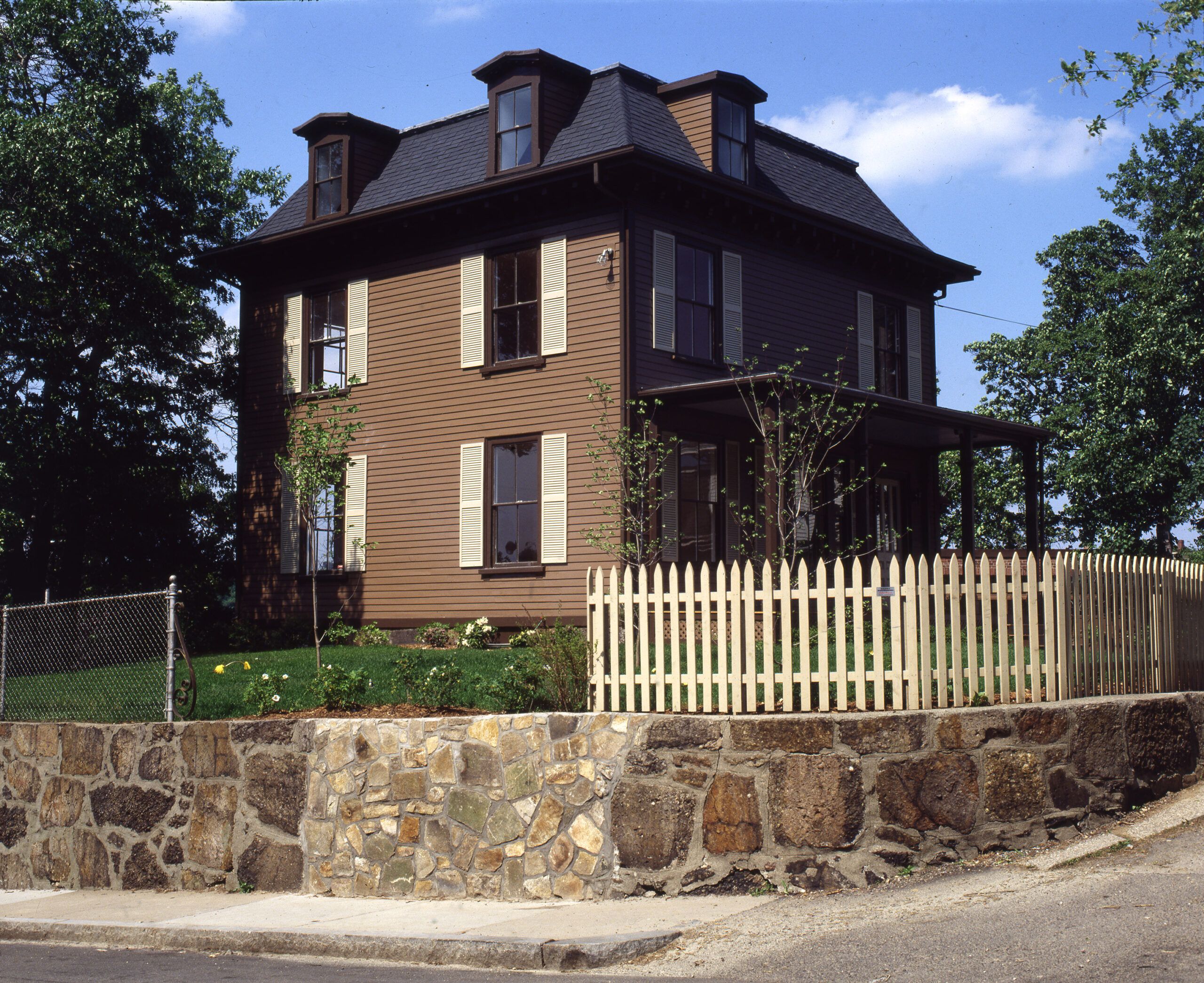It’s hard to imagine a time before home improvement shows dominated the weekend airwaves with how-to tips and walk-through tours. But in 1979, the year This Old House cameras first rolled, on-air renovation was a revolutionary idea. Offering advice on which projects were do-it-yourself and which were best left to the pros, This Old House knocked down the fourth wall and let homeowners in on the secrets of renovation. Viewers had the pleasure of seeing the job from start to finish without ever breaking a sweat—or the bank.
The show’s first project was a large, dilapidated, 120-year-old single-family house in Dorchester, Massachusetts. The 1860 Victorian with a distinctive mansard roof offered plenty of instructive renovation challenges, including a decaying metal and tar paper roof, rotting rafters, sagging clapboards and several tacked-on additions that detracted from the house’s original beauty.
The first order of business was roof repair. When the metal and tarpaper came off, the crew discovered that the rafters were not just rotted at the ends, where wooden gutters had leaked, but extensively throughout the roof structure and in need of replacement. Thus viewers learned the first hard lesson of old house renovation: you never know what you’re going to find when you start tearing down walls—or pulling off roofs for that matter.
Next came the demolition of an enclosed second entrance, added when a doctor opened an office in the house. This boxy, awkward structure was removed so that the front porch could be extended the full length of the front facade. The crew turned to an untouched twin house across the street as a guide to restoring the house’s original look.
At the back of the house, a poorly constructed mud room and porch were demolished and replaced with a graduated deck for outdoor dining and entertaining. The circa-1931 kitchen was gutted and opened up to the old dining room to create a family room space with room for a table and chairs. The dining room then moved to the front of the house, where a marble-mantled fireplace added elegance to the room. Upstairs, relocation of a door gave the master bedroom a master bath, and a roomy bedroom became a bathroom and laundry room for second and third floor bedrooms. The house had no insulation, so as construction progressed, crews blew cellulose into the walls, over the basement and the floor of the attic to tighten the house against drafts and increase the efficiency of its new gas-fired heat and hot water system.
With the house shaping up inside, the crew turned its attention to the exterior, specifically the quarter inch of paint that had built up on the clapboards over the past 100 years. While unsightly, these peeling layers proved key to discovering the house’s original color. Wielding a small scalpel, a paint historian chipped away at several corners of the house, creating a bull’s eye effect in the surface that revealed the house’s paint chronology. Examining this bull’s eye with her microscope, she discovered that the house was originally painted with a palette of complimentary browns: a medium brown for the body of the house; a darker brown for the porch trim and decorative brackets; and a light brown for the shutters and the front door. This mix of subtly contrasting hues is typical of Victorian-era homes. She also revealed that the original paint was oil-based, mixed on site by the painters or selected from a new line of ready-mixed paints that became available at hardware stores in the 1860s and ’70s. Throughout the late 19th century the house’s color alternated between this brown scheme and a similar ochre and brown palette, until the early 20th century when the house was painted white.
With a fresh coat of paint in its original brown palette, a new front porch and a modern floor plan, the stately Victorian was revived and a new television genre was born.

